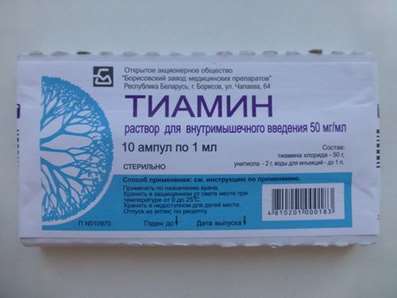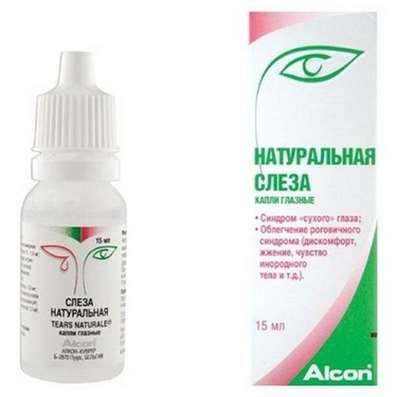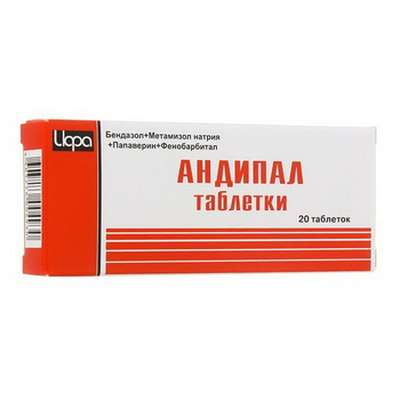Instruction for use: Azathioprine
I want this, give me price
Trade name of the drug – Azathioprine, Imuran
The Latin name of the substance Azathioprine
Azathioprinum (genus. Azathioprini)
Chemical name
6 - [(1-Methyl-4-nitro-1H-imidazol-5-yl) thio] -1H-purine (as sodium salt)
Gross formula
C9H7N7O2S
Pharmacological group:
Immunosuppressive drugs
The nosological classification (ICD-10)
D69.3 Idiopathic Thrombocytopenic Purpura: Werlhof's Disease; Idiopathic autoimmune thrombocytopenia; Idiopathic thrombocytopenic purpura of adults; Idiopathic thrombocytopenic purpura in adults; Immune idiopathic thrombocytopenic purpura; Immune thrombocytopenia; Bleeding in patients with thrombocytopenic purpura; Evans Syndrome; Thrombocytopenic purpura; Thrombocytopenia of immune origin; Chronic idiopathic thrombocytopenic purpura; Essential thrombocytopenia; Autoimmune thrombocytopenic purpura in pregnancy; Posttransfusion purpura
G70 Myasthenia gravis and other disorders of the neuromuscular synapse: Myasthenic syndrome; Myasthenic syndromes; Myasthenia gravis; Myasthenic syndrome; Severe myasthenia gravis (Myasthenia gravis)
K51 Ulcerative colitis: Colitis acute ulcerative; Colitis ulcerative; Ulcerative-necrotic colitis; Colitis ulcerative-hemorrhagic nonspecific; Colitis ulcerative and trophic; Colitis ulcerative idiopathic; Colitis ulcerative nonspecific; Nonspecific ulcerative colitis; Proctocolitis ulcers; Hemorrhagic purulent rectoxitis; Rectoccolitis ulcerative-hemorrhagic
K73.2 Chronic active hepatitis, not elsewhere classified: Chronic active hepatitis; Chronic hepatitis is aggressive; Chronic hepatitis active
L10 Pemphigus [pemphigus]: Benign pemphigoid of the mucous membranes; Bubble dermatosis; Pemphigus; Dermatitis, vesicular; Benign pemphigus; Ordinary pemphigus; Pemphigus; Bubble dermatitis; Family benign pemphigus Hailey-Hailey
L40 Psoriasis: Chronic plaque psoriasis with diffuse; generalized psoriasis; Psoriasis of the scalp; hairy parts of the skin; A generalized form of psoriasis; Psoriazoformny dermatitis; Psoriasis complicated with erythroderma; disabling psoriasis; Isolated psoriatic plaque; Eksfolliativny psoriasis; psoriatic erythroderma; Psoriasis with eczematization; Hyperkeratosis in psoriasis; Inverse psoriasis; Psoriasis ekzemopodobnye; dermatoses psoriazoformny; Psoriasis genitals; Psoriasis lesions with hairy areas of the skin; erythrodermic psoriasis; Chronic psoriasis of the scalp; Chronic psoriasis; ordinary psoriasis; refractory psoriasis; Koebner phenomenon; psoriasis
M06.9 Rheumatoid arthritis, unspecified: Rheumatoid arthritis; Pain syndrome in rheumatic diseases; Pain in rheumatoid arthritis; Inflammation in rheumatoid arthritis; Degenerative forms of rheumatoid arthritis; Children's rheumatoid arthritis; Exacerbation of rheumatoid arthritis; Acute articular rheumatism; Rheumatic arthritis; Rheumatic polyarthritis; Rheumatoid arthritis; Rheumatic polyarthritis; Rheumatoid arthritis; Rheumatoid arthritis; Rheumatoid arthritis of active course; Rheumatoid periarthritis; Rheumatoid polyarthritis; Acute rheumatoid arthritis; Acute rheumatism
M30 Nodular polyarteritis and related conditions
M32 Systemic lupus erythematosus: Lupus erythematosus red disseminated; Disseminated lupus erythematosus; Chronic lupus erythematosus
M33 Dermatopoly myositis: Dermatomyositis; Wagner's disease; Wagner-Unferricht-Hepp Syndrome; Systemic dermatomyositis; Sclerodermatomyositis
N03 Chronic nephritic syndrome: Glomerulonephritis chronic; Development of nephrotic syndrome; Syndrome of nephritic chronic; Chronic diffuse kidney disease; Chronic glomerulonephritis
T86.9 Dying and rejection of transplant (s) organ and tissue, unspecified: Rejection reaction; Rejection reaction during organ transplantation; Graft-versus-host response; GVHD; Transplant rejection reactions
CAS code
446-86-6
Characteristics of the substance Azathioprine
Light yellow with a greenish tinge crystalline powder, almost insoluble in water and alcohol, easily soluble in alkalis.
Pharmacology
Mode action - Immunosuppressive.
It is a structural analogue (antimetabolite) of adenine, hypoxanthine and guanine, which form part of nucleic acids (DNA and RNA), disrupts the biosynthesis of nucleotides and suppresses tissue proliferation.
Immunosuppressive action is caused by hypoplasia of lymphoid tissue, a decrease in the number of T-lymphocytes, a violation of the synthesis of immunoglobulins, the appearance in the blood of atypical phagocytes and, ultimately, the suppression of cell-mediated hypersensitivity reactions.
After oral administration, it is quickly and completely absorbed. Cmax is achieved after 1-2 hours. Binding to plasma proteins is 30%. After the "first passage" through the liver is biotransformed into an active metabolite - mercaptopurine. T1 / 2 is 5 hours. It penetrates the placental barrier and is secreted into breast milk. Oxidized (inactivated) in the liver with the participation of xanthine oxidase with the formation of 6-thiocaric acid. Oxidation and methylation of azathioprine occurs also in erythrocytes. Concentration in the blood does not correlate with the severity of the effect, because The azathioprine itself and its active metabolite, mercaptopurine, are rapidly disposed of by blood from tissues. It is excreted almost completely with bile, through the kidneys - no more than 1-2%.
Application of the substance Azathioprine
Prevention of graft rejection reaction (as part of combination therapy), rheumatoid arthritis, chronic active hepatitis, systemic lupus erythematosus, ulcerative colitis, dermatomyositis, myasthenia gravis, periarteritis nodosa, vulgar pemphigus, autoimmune glomerulonephritis, idiopathic thrombocytopenic purpura, psoriasis.
Contraindications
Hypersensitivity, incl. mercaptopurine, suppression of hemopoiesis (hypoplastic and aplastic anemia, leukopenia, lymphopenia, thrombocytopenia), hepatic insufficiency, pregnancy, breastfeeding, children's age.
Restrictions
With caution (taking into account the benefit / risk ratio) is used for chicken pox, herpes zoster, xanthine oxidase deficiency, radiation and cytotoxic therapy.
Pregnancy and breast-feeding
Contraindicated in pregnancy.
Action category for fetus by FDA - D.
If necessary, use during lactation should stop breastfeeding.
Side effects of Azathioprine
From the cardiovascular system and blood (hematopoiesis, hemostasis): myelodepression (leukopenia, thrombocytopenia, anemia), megaloblastic erythropoiesis and macrocytosis.
On the part of the intestine: nausea, decreased appetite, vomiting, diarrhea, abdominal pain, impaired liver function (hyperbilirubinemia, increased activity of hepatic transaminases and alkaline phosphatase), cholestatic hepatitis, erosive and ulcerative lesions of the mouth and lips; Recipients of transplants - pancreatitis, ulceration of the stomach and duodenum, intestinal bleeding, necrosis and intestinal perforation; With prolonged use - toxic hepatitis.
Allergic reactions: skin rash, drug fever.
Other: myalgia, arthralgia, panoveitis, development of secondary infection (bacterial, viral, fungal, protozoal), alopecia; In isolated cases - acute renal failure, hemolytic anemia, acute lung diseases, meningeal reactions; With long-term use - mutagenicity (it is potentially mutagenic and causes chromosomal changes in humans), teratogenicity, carcinogenicity (possibly the appearance of malignant tumors: lymphoreticular, epithelial, skin tumors in areas exposed to sunlight).
Interaction
Potentiates the effects of immunosuppressants, cytostatics. Azathioprine inhibits the anticoagulant effect of warfarin. Allopurinol slows the metabolism of azathioprine, contributes to its cumulation and increased toxic effects, while simultaneous use it is necessary to reduce the dose of azathioprine (up to 1/4 of the average dose). When joint use of azathioprine with co-trimoxazole may enhance the myelotoxic effect of azathioprine, with ACE inhibitors - an increased risk of anemia and severe leukopenia, with other immunosuppressants (corticosteroids, cyclosporine, anti-CD3 antibodies) - increases the risk of infection and the onset of tumors. When vaccinated with live viral vaccines concomitantly with the administration of azathioprine, viral replication may be enhanced, inactivated vaccines - inhibition of antibody production. With caution use azathioprine simultaneously with sulfasalazine or mesalazine.
Overdose
Symptoms: dyspeptic phenomena, pancytopenia, increased concentrations of bilirubin and transaminases in serum.
Treatment: symptomatic, hemodialysis (with hemodialysis azathioprine is not output completely).
Routes of administration
Inside.
Special instructions
Do not use for a long time (possible induction of neoplastic processes). During the first 8 weeks of treatment, weekly monitoring of the peripheral blood pattern is shown (1-2 times a month later), as well as periodic monitoring of serum hepatic transaminases, alkaline phosphatase and bilirubin levels. For violations of kidney and / or liver function, as well as with the simultaneous administration of allopurinol, azathioprine should be used at lower doses (1/4 of the average dose).
During the treatment period, women of childbearing age should use reliable methods of contraception.

 Cart
Cart





